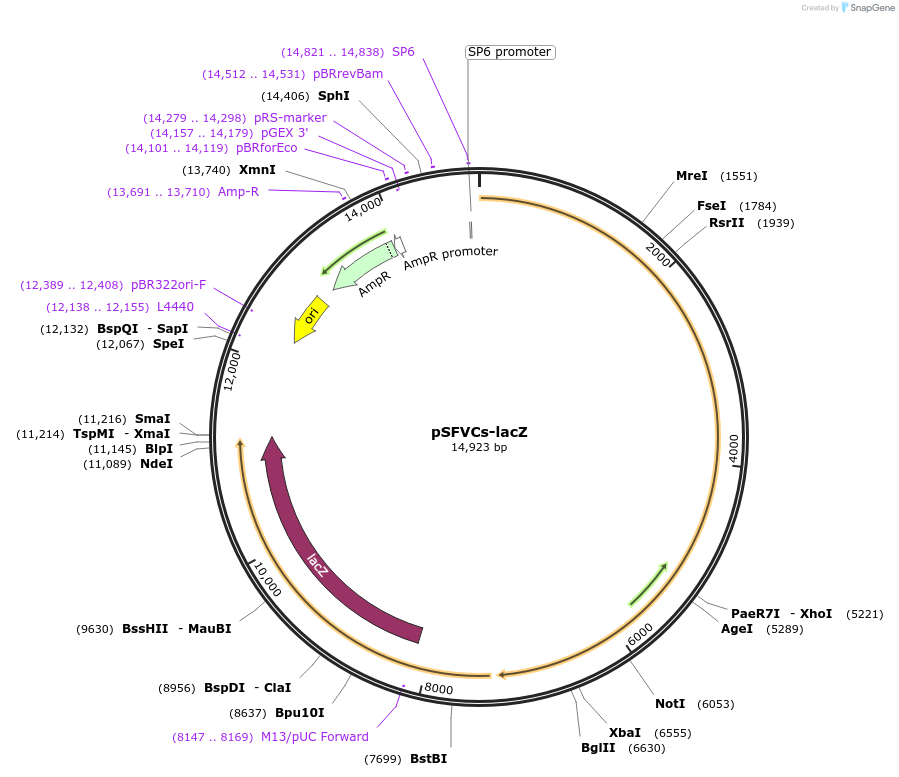-
PurposeThis is a high level expression plasmid for production of recombinant genomic SFV RNA encoding a C-beta galactosidase fusion protein.
-
Depositing Lab
-
Sequence Information
Ordering
| Item | Catalog # | Description | Quantity | Price (USD) | |
|---|---|---|---|---|---|
| Plasmid | 92076 | Standard format: Plasmid sent in bacteria as agar stab | 1 | $89 | |
Backbone
-
Vector backbonepGEM1
-
Vector typeC-lacZ expression plasmid, for run-off transcription and RNA transfection of mammalian cells
Growth in Bacteria
-
Bacterial Resistance(s)Ampicillin, 100 μg/mL
-
Growth Temperature37°C
-
Growth Strain(s)DH5alpha
-
Copy numberUnknown
Gene/Insert
-
Gene/Insert nameC-lacZ
Resource Information
-
Articles Citing this Plasmid
Terms and Licenses
-
Academic/Nonprofit Terms
-
Industry Terms
- Not Available to Industry
Trademarks:
- Zeocin® is an InvivoGen trademark.
Depositor Comments
Semliki forest virus (SFV) vector expression control with capsid expression enhancement. In this construct the lacZ is expressed as a C-lacZ fusion protein.
The plasmid contains the same silent mutations as pSP6-SFV4s in order to remove bacterial transcription promotors.
The capsid protein (C) of SFV contains a protease activity that cleaves the C protein off the growing polypeptide chain during biosynthesis. The C protease cleaves after the C-terminal W in the wild type sequence WSA. In recombinant proteins the C protease cleave many sequences equally well e.g. WSA, WGE, WMM, WSL and WAS. producing recombinant proteins with correct N-terminus. However, the sequence WDP, the consequence of using a BamH1 cloning site, is not cleaved.
These plasmids were created by your colleagues. Please acknowledge the Principal Investigator, cite the article in which the plasmids were described, and include Addgene in the Materials and Methods of your future publications.
-
For your Materials & Methods section:
pSFVCs-lacZ was a gift from Henrik Garoff (Addgene plasmid # 92076 ; http://n2t.net/addgene:92076 ; RRID:Addgene_92076) -
For your References section:
A significantly improved Semliki Forest virus expression system based on translation enhancer segments from the viral capsid gene. Sjoberg EM, Suomalainen M, Garoff H. Biotechnology (N Y). 1994 Nov;12(11):1127-31. PubMed 7765556







